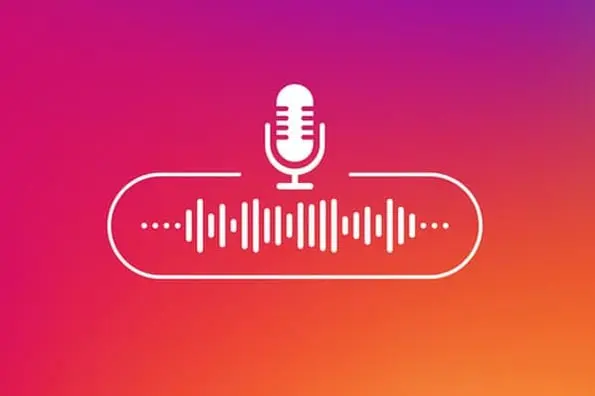Today, both platforms have greatly expanded. And, each time this happens, marketers wonder, "Which of these social media channels should I use in my strategy? And, is this trend even worth investing in?"
The good news? Strong competition around a social media trend, like chat streaming, signals that it's not going away anytime soon and might be worth investing in. So, the only thing you'll need to figure out is where to experiment with the trend.
Below, I'll give you a breakdown of Clubhouse's biggest competitors as well as some marketing takeaways to help you determine which platform is right for your brand.
Need to brush up on your Clubhouse knowledge before diving in? Check out this post for a recap of what Clubhouse is and why competitors are trying to get in on the action.
Download Now: The 2025 State of Social Media Trends [Free Report]
Clubhouse Vs. Twitter Spaces
According to HubSpot Blog Research, 44% of marketers plan to leverage live audio chat rooms for the first time on social media in 2022.
The research also suggests that marketers are more interested in Twitter Spaces than in Clubhouse. In fact, it's the number one emerging social media platform brands invested in this year and marketers say they'll invest more in that audio platform than Clubhouse.
Meanwhile, 15% of marketers plan to decrease their Clubhouse investment in 2022.
So how does Twitter Spaces match up to Clubhouse? Let's get into it.
Twitter Spaces was softly rolled out to a small group of beta testers in late December and fully launched in May of 2021.
The Spaces experiment was announced late last year following the success of audio apps like Clubhouse. At that time, Twitter Product Lead, Kayvon Beykpour told TechCrunch, "We think that audio is definitely having a resurgence right now across many digital spaces. … It'll be fascinating to see how other platforms explore the area as well, but we think it's a critical one for us, too."
The feature, which closely resembles Clubhouse Rooms, originally only allowed users with over 600 followers to host a space. Today, the tool is open to all Twitter users regardless of follower count and features prominently on the app as a center tab.
How Twitter Spaces Works
To create a Space, the first thing you must do is click on the center tab icon on the Twitter app. From there, you can scroll through all the conversations happening on the platform.

Once you find a Space you're interested in, you simply click on it and select "Start Listening." From there, you can navigate anywhere on the app as you listen and even leave the app while the Space continues.

If one of your followers is hosting a Space, you will see that at the top of your timeline.

Twitter Spaces also allows you to:
- Add captions for accessibility.
- Engage with speakers through emoji reactions.
- Share the Space via Tweet, DM, or link.
- Add up cohosts and speakers.
- Share relevant tweets in the Space.
- Record the Space and share it with audience later on.
In addition, you can preschedule Spaces and prompt audience to set reminders for the event.
At the moment, those who launch a Space can invite up to 10 hand-picked speakers. From there, they can adjust who speaks based on who raises their hand and which speakers need to leave early.
When entering the Space, the UX is similar to Clubhouse in that you can see who's speaking and who created the Space before seeing a list of other listeners. You'll also see a down arrow at the top that allows you to minimize, but continue listening to the chat, as well as a "Leave," request to speak, share, and heart icon – allowing you to signal that you enjoy the discussion.
Like Clubhouse, users will be muted as they enter the room and will need to get speaking privileges from the Space moderator if they'd like to say something
Takeaways for Marketers
While both platforms offer many of the same features, Twitter Spaces has a wider reach.
The platform has over 200 million monetizable daily active users, compared to Clubhouse's reported 4.9 million daily active users.
In addition, Twitter already has an established platform that offers a timeline, an explore page, and many other tools beyond its audio feature. For brands, this means that you can accomplish many goals on the same platform.
With this in mind, Spaces could also be a natural transition for brands aiming to build a community. At this point, people are already using Twitter to respond to text-based threads and tweets related to their interests, industry, beliefs, and passions.
Now, they can vocally share their thoughts in Spaces without worrying about character limits. This could further engage Twitter's community-centered audience while also helping brands take community marketing to the next level.
Clubhouse is another community-building platform that is more niche and may work better for brands that already have a strong presence on other social networks.
Clubhouse's Other Competitors
Instagram Live Rooms
Shortly after Facebook's CEO and Co-Founder Mark Zuckerberg spoke in a Clubhouse room, the social media company was reportedly experimenting with a similar audio feature. While we're still not certain if and when Facebook will launch a competing feature yet, its company, Instagram, is expanding its Live feature to add chat rooms.
What makes Instagram Live Rooms significantly different from Clubhouse or Spaces is that it streams full video chats rather than audio discussions.

Before March, Instagram Live allowed two Instagram users (one broadcaster and one guest) to stream their video call for public audiences or followers. For viewers, this experience was like watching two people video call without being able to participate.
Now, Instagram has upped the guest capacity of these rooms from one to three.
A March 1 announcement from Instagram explained, "In the past year, special moments have happened on Live, including informational talks about science and COVID-19 guidelines, interviews with celebrities, and record-breaking rap battles."
"Creators of all kinds — from fitness instructors to musicians, beauty bloggers, chefs, and activists, all relied on Live to create moments and bring people together to reach their communities in creative ways. We can't wait to see what more creativity comes from this highly-requested update."
"We hope that doubling up on Live will open up more creative opportunities — start a talk show, host a jam session or co-create with other artists, host more engaging Q&As or tutorials with your following, or just hang out with more of your friends," the Instagram statement added.
How to Instagram Live Rooms Will Work
At the moment, the Live Rooms feature is still rolling out, but the brand says it will soon be available to global Instagram users.
When Live Rooms is fully implemented, any user can tap their Stories icon, swipe left to the Live setting, choose a title or foundation to promote in their stream. Then, they can tap the "Rooms" icon and pick guests to be in their broadcast. Viewers will also be able to request to join rooms that are already in progress, as shown below:

Takeaways for Marketers
While Live Rooms could be an interesting prospect for brands that already have a following there, they do seem to have some limitations.
For example, Twitter Spaces and Clubhouse allow more than five guests while Live Rooms only allows three additional guests. This might make it harder to take questions or comments from audience members who'd like to add to the conversation.
Another factor that could be a pro or con depending on the brand considering it is the visual nature of Live Rooms. Because speakers must appear on camera, some brands will have more opportunities to show products or visuals. Meanwhile, other brands looking for a more open dialogue will need to find only speakers comfortable with appearing on video.
One solid feature that could make Instagram Live Rooms more competitive for brands is Instagram Shopping. In 2020, Instagram added new shopping features that allow brands to share links to products in live streams that can be purchased directly on Instagram. According to Instagram's announcement, these features will be available in Live Rooms so brands could begin to monetize their live chats.
Facebook and LinkedIn's Clubhouse Rivals
At this point, Facebook's Clubhouse alternative is still in the very early stages of development while LinkedIn's was confirmed in late March. At this point, there aren't many details on what LinkedIn or Facebook's final audio platforms could look like when they launch. However, reports hint that they'll both have a very similar audio-only user experience to Clubhouse.
For example, here's a look at the audio chat UX LinkedIn is testing, as reported by TechCrunch:

Suzi Owens, a LinkedIn spokesperson, confirmed that LinkedIn is testing a new audio feature with the UX shown above.
"We're doing some early tests to create a unique audio experience connected to your professional identity," Owens said. "And, we're looking at how we can bring audio to other parts of LinkedIn such as events and groups, to give our members even more ways to connect to their community."
When it comes to Facebook, not much has been publicly announced about its feature. However, TechCrunch reported back in May that the feature could be part of the Facebook Messenger app. Here's a very early mockup of the feature, which was recently leaked on Twitter:

While Facebook confirms that the mockup above was part of its "exploratory" process, the tech company told TechCrunch that the image doesn't accurately depict the finalized version of the feature.
Takeaways for Marketers
At this point, marketers should keep these options on their radar and be ready to consider these alternatives if they do launch.
While Clubhouse users that love to network and discuss their industry might transition well to LinkedIn's version, Facebook's pure size could mean that their in-app audio chat experiences could get more listeners than you'd find on Clubhouse.
Which audio social media platform should marketers use?
Like we saw with Stories and short-form music video features, every social media platform wants to take advantage of audio social media trends. Because each version is pretty similar to all the others, you might be wondering which channel you should invest in.
At the moment, the jury is still out on which platform will be the most successful for the longest, especially since Twitter and Instagram's features aren't fully launched yet. However, when all the social media competitors implement their new features, you'll want to consider a few factors to determine which is right for you, such as:
- Potential reach: While Twitter and Instagram have the biggest audiences by far, Clubhouse is quickly growing. If this app were to launch an Android version soon, it could potentially burst in growth due to its current buzz and popularity.
- Your following: Do you already have a large following on one platform that has a chat streaming feature? If so, you might want to start there before investing time into another app where you have no audience.
- Media formats: Clubhouse and Twitter's chat streams are designed to be audio-only, while Instagram Live Rooms will show video. If you prefer staying off-camera, you might want to avoid one of the apps that requires your camera.
- Miscellaneous features: While Clubhouse enables users to make clubs – or groups of users with similar interests, Instagram enables brands to place Instagram Shopping CTAs in their Live streams. While you're exploring each platform, take note of the smaller features that differentiate them in case one of these tools could help your brand.
Want to learn more about the latest social media trends and expert insights? Download HubSpot's 2021 Social Media Trends Report for free below.
Editor's Note: This post was originally published in June 2021 and has been updated for comprehensiveness.
Social Media Marketing




![12 social media trends marketers should watch in 2025 [new data]](https://53.fs1.hubspotusercontent-na1.net/hubfs/53/social-media-trends_6.webp)
![The best social media platforms for video content in 2025 [consumer data]](https://53.fs1.hubspotusercontent-na1.net/hubfs/53/img-1-20250516-9399498.webp)


.png)
![Social media shopping in 2025: Everyone’s shopping on social — here’s how marketers can keep up [new data]](https://53.fs1.hubspotusercontent-na1.net/hubfs/53/1052%20x%20850%20social%20media.jpg)


![Best Social Media Marketing Courses to Take Online [Free & Paid]](https://53.fs1.hubspotusercontent-na1.net/hubfs/53/ft-smm.webp)